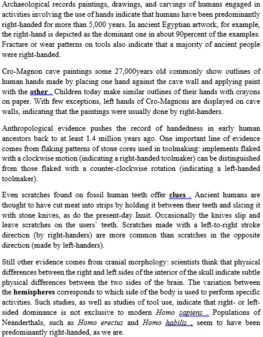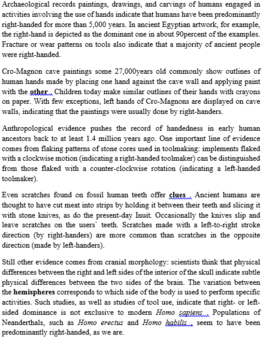Read the following passage and mark the letter A, B, C, or D on your answer sheet to indicate the correct answer to each of the questions from 27 to 31.
The Progressive Movement
The progressive movement was a powerful and broad-based movement of reform that had lasting effects on the American political system in the first two decades of the twentieth century. It arose in reaction to the domination of the social and political system by business interests and rampant corruption throughout the political party system during the period following the end of the Civil War in 1865. Progressivism emerged as a force during the presidency of Theodore Roosevelt, from 1901 to 1909, and reached its height in the presidential campaign of 1912. By the time the United States entered World War I in 1917, progressivism as a force had faded from the political scene. The progressive movement was focused on instigating, or initiating change in three different areas. One area that was of major interest to the progressive movement was the imposition of legal and government control over big business, which had usurped an extraordinary amount of power in the era of the wealthy industrial barons such as Rockefeller and Carnegie. A second area of interest to the progressive movement was the improvement of the social system in order to rid society of the poverty, slum housing, and exploitation of immigrant and child labor that were a part of the era. A final area of interest was the cleaning up of the political system to move political decisions back into the realm of direct democratic control and away from the corrupt backroom deals that plagued the world of politics.
Progressivism was a grassroots movement that first gained force at the local level. In cities such as Cincinnati and Cleveland, effective urban reform movements took hold, and city officials were appointed or elected to run their respective cities along nonpartisan lines and out from under the control of political parties and bosses. The progressive movement then worked its way from the local level to the state level and then on to the national level. In the state of Wisconsin, for example, "Fighting Bob" La Follette led the drive for change, first in his role as governor of the state (1901-1906) and later as the U.S. senator representing the state (1906-1925). Under his leadership, numerous reforms were instituted: state regulation of the railroads increased, policies directed at improving the lives of workers -- such as workers' compensation and unemployment insurance -- were instituted, and in the political arena, selection of party candidates was determined by direct democratic vote rather than through backroom political wrangling.
The word “instigating” in paragraph 2 is closest in meaning to _______ .
A. ending
B. understanding
C. causing
D. improving



Kiến thức: Đọc hiểu
Giải thích:
Từ “instigating” (gây loạn, xúi giục) trong đoạn 2 có nghĩa gần với _____.
A. ending: kết thúc B. understanding: hiểu biết
C. causing: gây ra D. improving: cải thiện
=> instigating = causing
Thông tin: The progressive movement was focused on instigating, or initiating, change in three different areas.
Tạm dịch: Phong trào tiến bộ đã tập trung vào việc xúi giục, hoặc khởi xướng sự thay đổi trong ba lĩnh vực khác nhau.
Chọn C